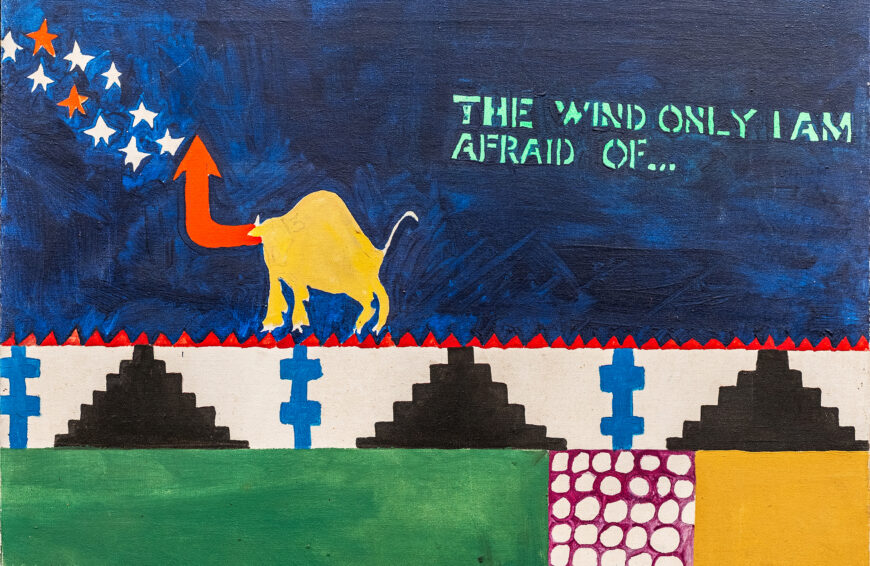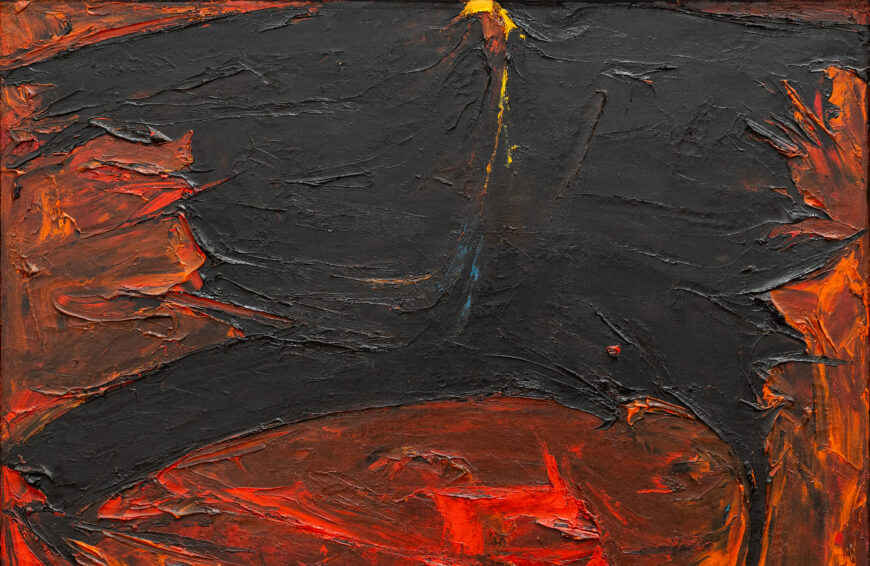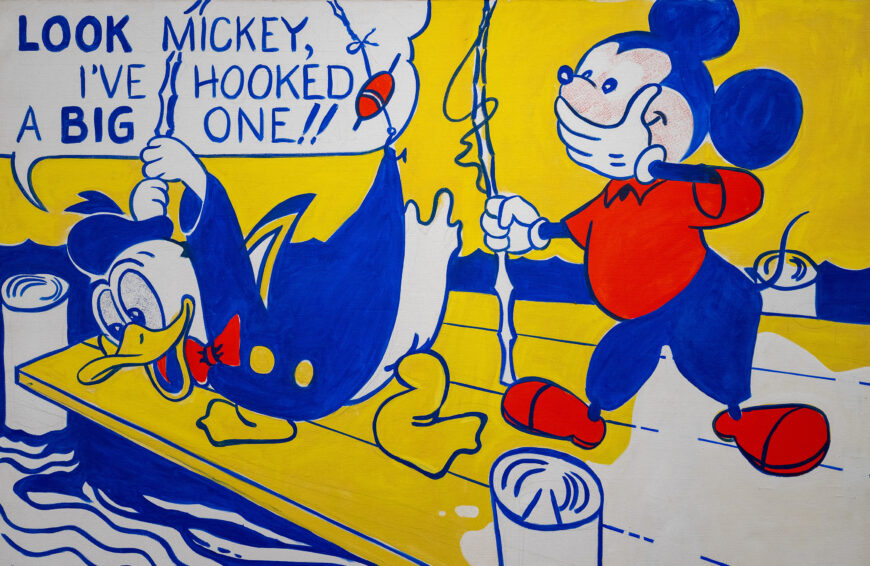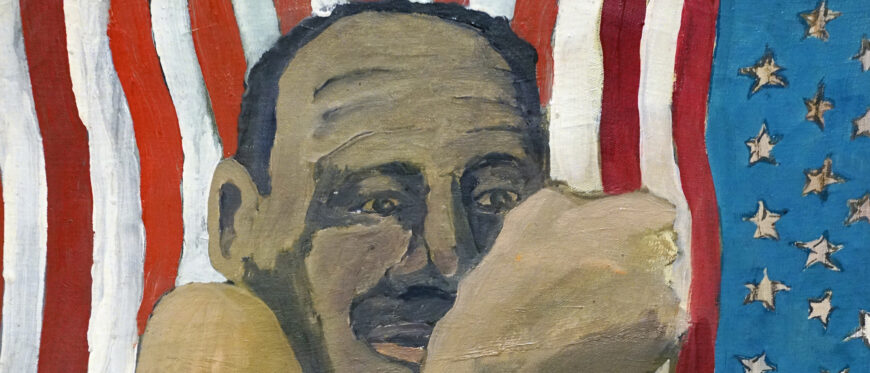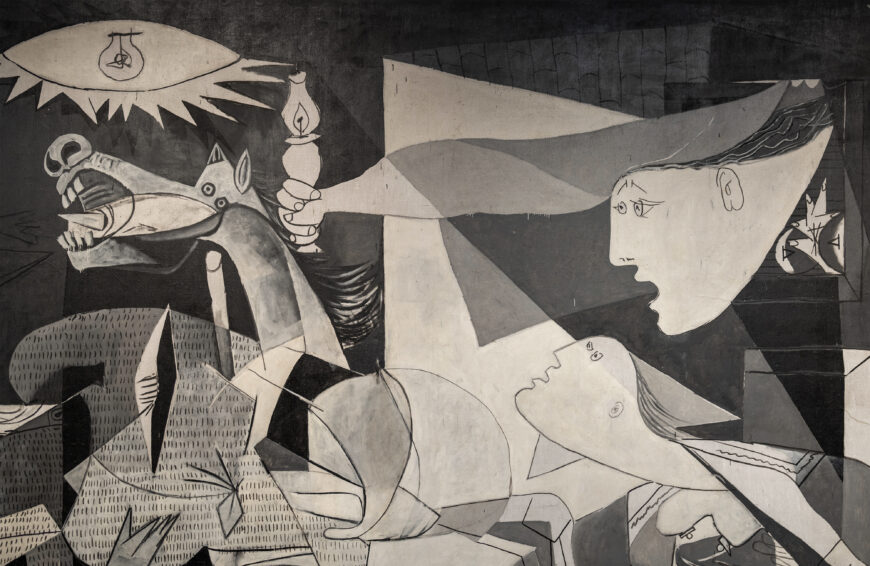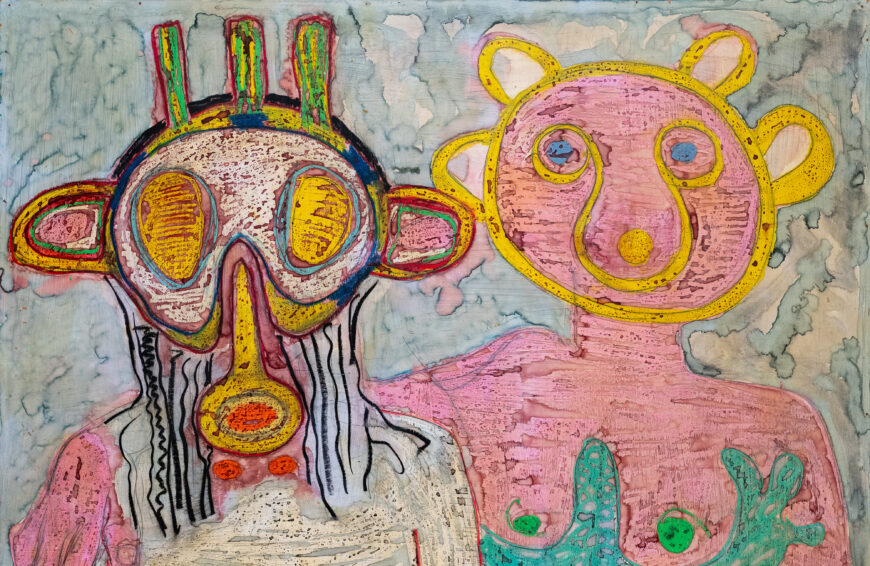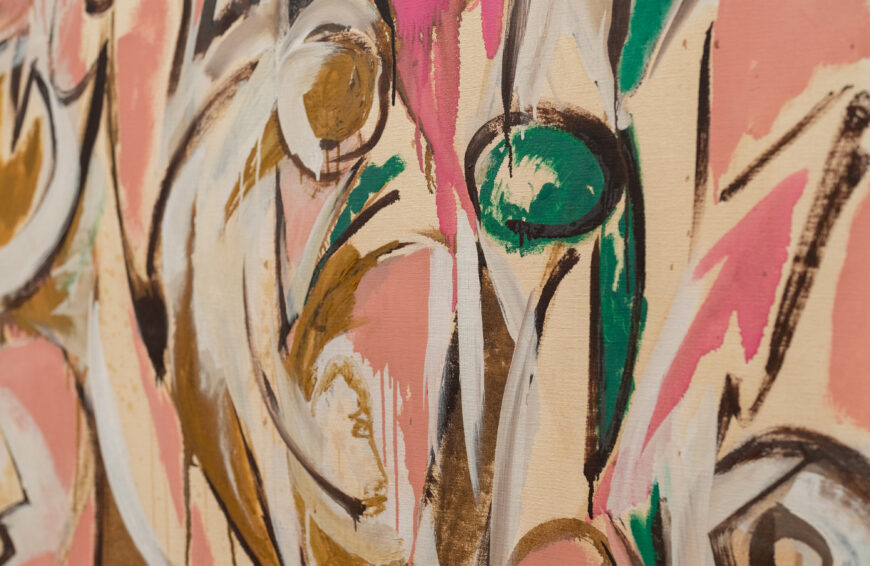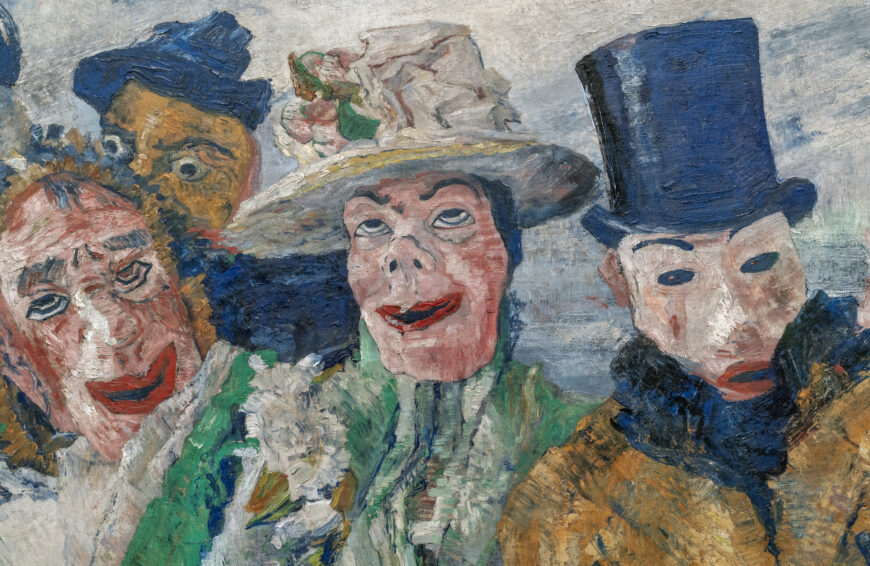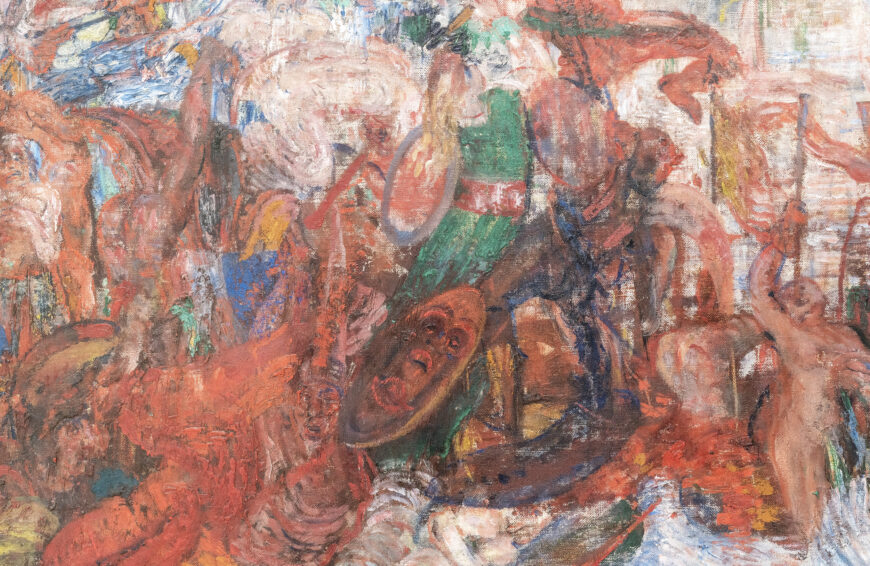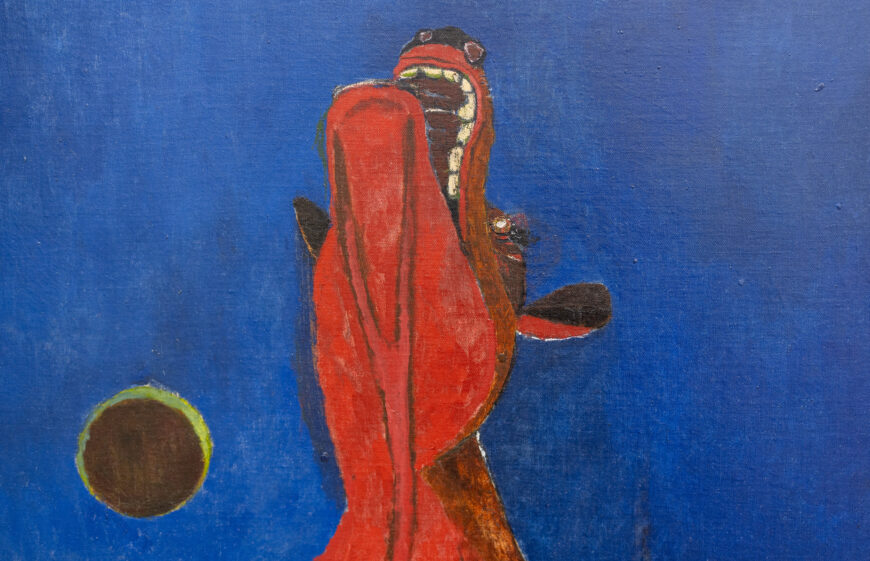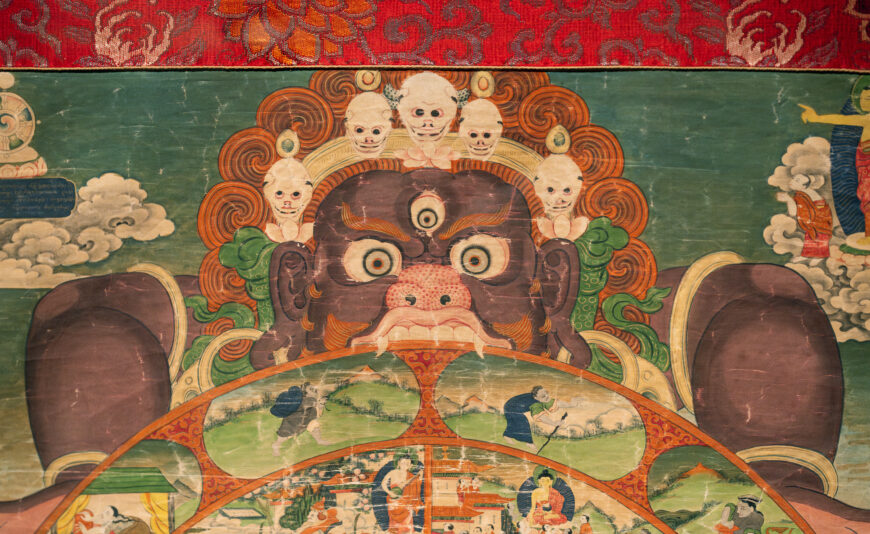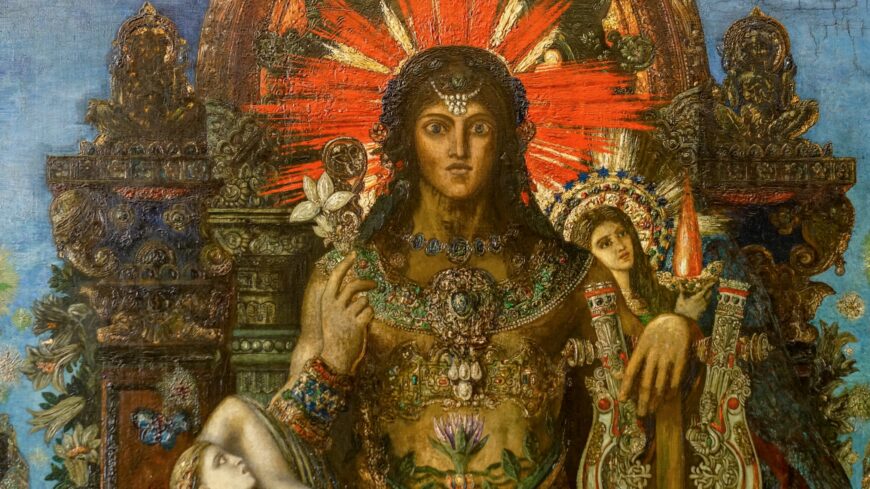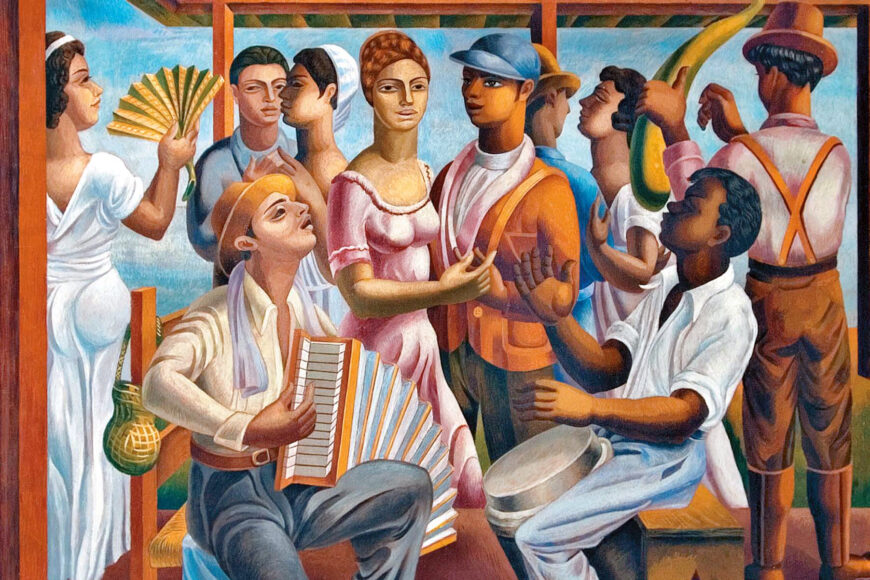Franz von Stuck, The Sin, 1893, 94.5 x 59.5cm (Neue Pinakothek, Munich)
Franz von Stuck, The Sin
[0:00] [music]
Dr. Beth Harris: [0:04] We’re in the Neue Pinakothek in Munich. We’re looking at a painter who lived in Munich and worked in Munich, Franz von Stuck, and this is his painting, “The Sin.”
Dr. Steven Zucker: [0:14] Von Stuck is probably best known as a Symbolist artist, this late 19th-century movement that was interested in the interior self.
Dr. Harris: [0:23] A common theme among those painters was the femme fatale, the dangerous woman, and that’s exactly what Stuck has painted here. He’s given us the embodiment, the personification of sin, at the same time as a figure of Eve.
Dr. Zucker: [0:40] In a very literal way, you have this nude female figure who is wrapped by this serpent that twines around her body and seems to be looking directly at us, almost hissing, as if it might strike at any moment. In fact, the very act of looking at her seems to endanger us.
[0:57] Look at the way that serpent looks at us from just above her breasts, full-face, and then the painter implies that the snake’s body twirls around her neck. Its massive body rides down her left side, then twirls around the bottom of her belly. It is in direct contact with her flesh. It’s almost lost in the darkness.
Dr. Harris: [1:18] If you think about more typical representations of Eve, it’s the serpent that tempts Eve in the Garden of Eden. It’s the serpent that is the embodiment of evil and Eve who is weak and gives in to that temptation, but here, that’s not the case. She is evil.
Dr. Zucker: [1:36] He’s made her as sensuous as possible so that we are, as viewers, entrapped. What’s so interesting about this painting is that he is very conscious of the role of the viewer and he is engaging the viewer as somebody who is directly involved in the unfolding of the narrative.
Dr. Harris: [1:52] Remember, this is the time of Freud. This is the late 19th century, the early 20th century. This is not an investigation of sin in the Christian sense, but an investigation of sin and temptation as attributes of the human psyche.
Dr. Zucker: [2:09] Look how the artist has framed this canvas though. We have this completely overwrought gold frame with these two large Doric pillars, with beautiful fluting and an inscription that has the title in it. All very classicizing, making sin itself, as subject, somehow eternal.
[2:30] Here we have the end of the 19th century, with Christianity no longer a primary social driver. A moment ago, you talked about Freud, and Freud is so interesting at this historical moment because the church has lost its supremacy, and science is now moving into the fore to deal with the same issues that religion had once dealt with.
[2:49] Here, we’re seeing a painting where religion has been stripped out of it, but we’re still left with the moral problem of sin, of corruption. How do we now in the contemporary world deal with this?
[3:00] [music]
Loading Flickr images...


